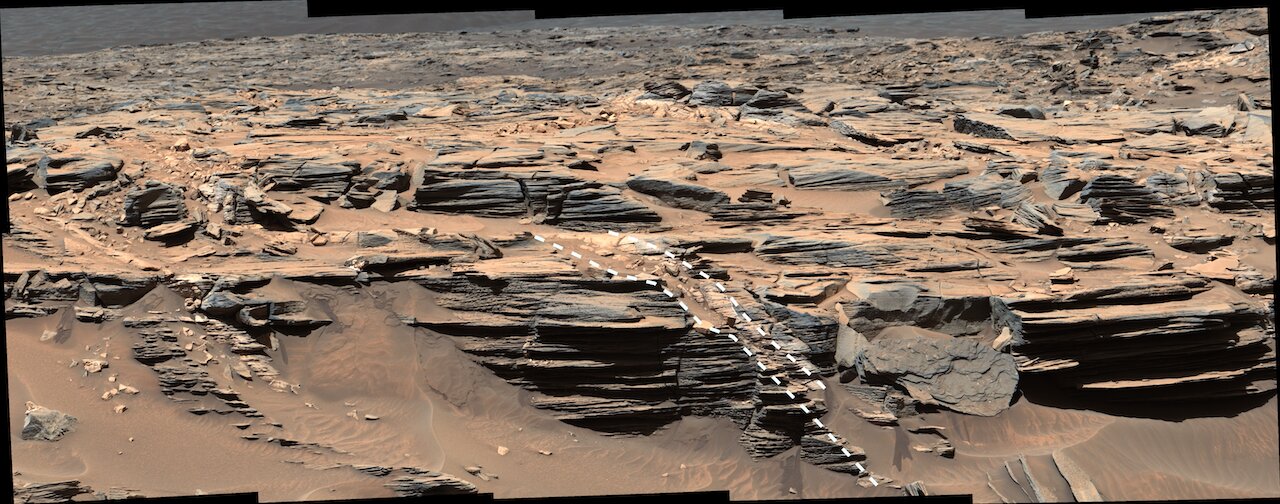Scientists found opal among the rock samples that the Curiosity rover once studied in the Gale Crater. This is an amorphous form of silica, to which water is attached by physico-chemical forces. Theoretically, this material can point to hidden sources of water.

Discovery in Curiosity samples
For many years, the Curiosity rover has been studying the Gale crater on Mars. Recently, a group working with neutron detector data was able to confirm the presence of minerals containing water in some old samples using two independent methods.
The fact is that the Gale crater is dotted with a large number of fractures. Archival data from its cameras show that the rocks forming halos around them are extremely similar to each other. The data from the laser spectrograph installed on the rover show that the light mineral from which they consist is nothing but opal.
Since opal contains a large amount of physico-chemically bound water, the researchers decide to turn to the data of the neutron detector, which is also installed on Curiosity. It shows that there are really a lot of compounds in these samples that are important for life.
Why is the opal found on Mars important?
On the Earth, we used to perceive opal as a semi-precious rock. In fact, it is an amorphous form of a well-known compound — silicon oxide, also known as silica. Physico-chemical forces allow the molecules of this substance to attach to themselves an arbitrary number of water molecules.
Therefore, on Earth, opals are formed mainly in various extreme humid places, such as the bottom of lakes and oceans and hot geysers. Scientists hope that such rocks can exist on Mars even in the current era, when it has long ceased to be wet and warm.
Scientists are sure that if somewhere on Mars there can now be an environment that could enrich silica with water, then it should hide among the fractures at the bottom of craters. And perhaps it is the opal that will point to the place where it should be looked for. In the future, these places may become a source of water for Martian colonies.
According to phys.org
Follow us on Twitter to get the most interesting space news in time
https://twitter.com/ust_magazine

